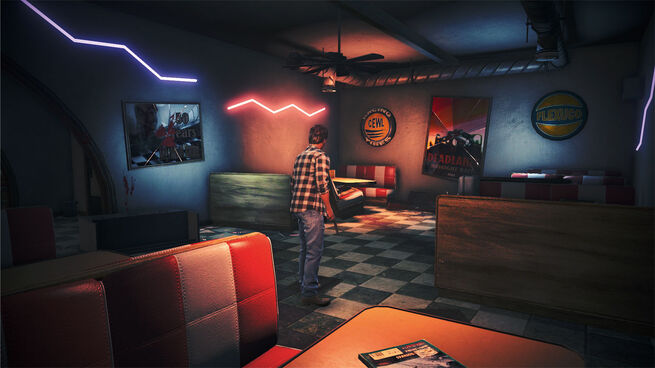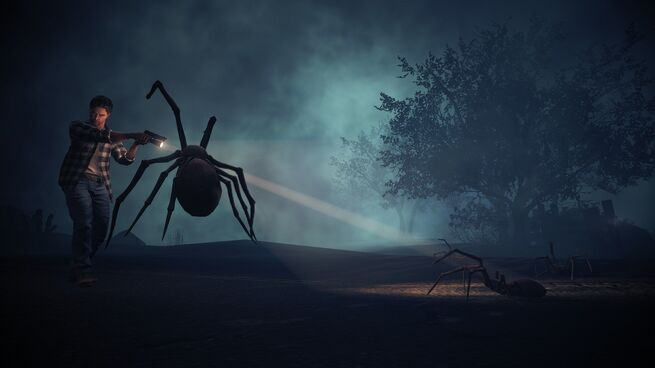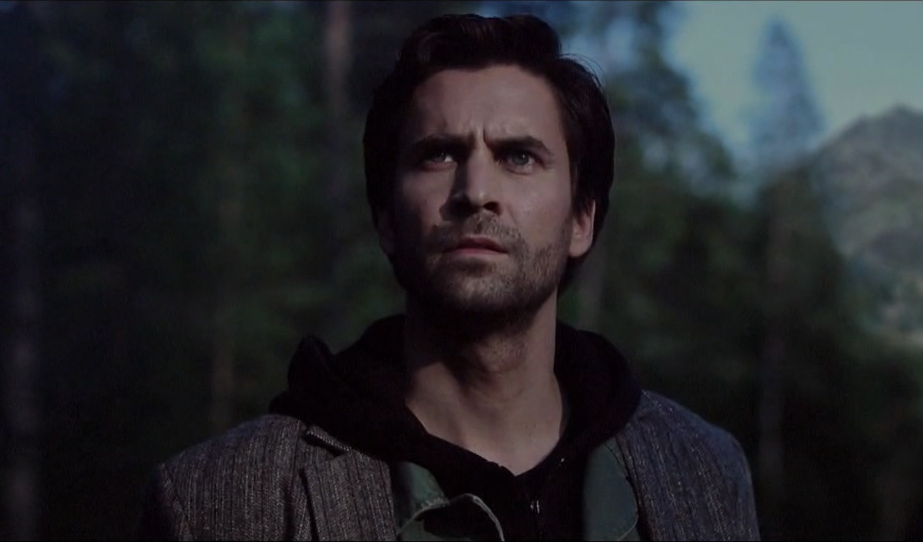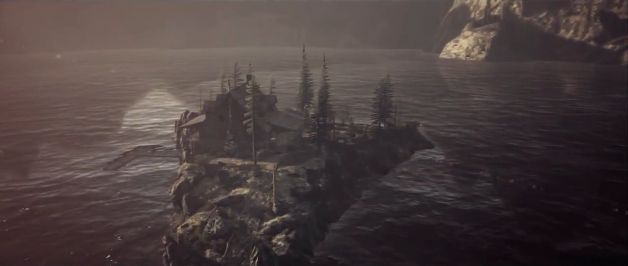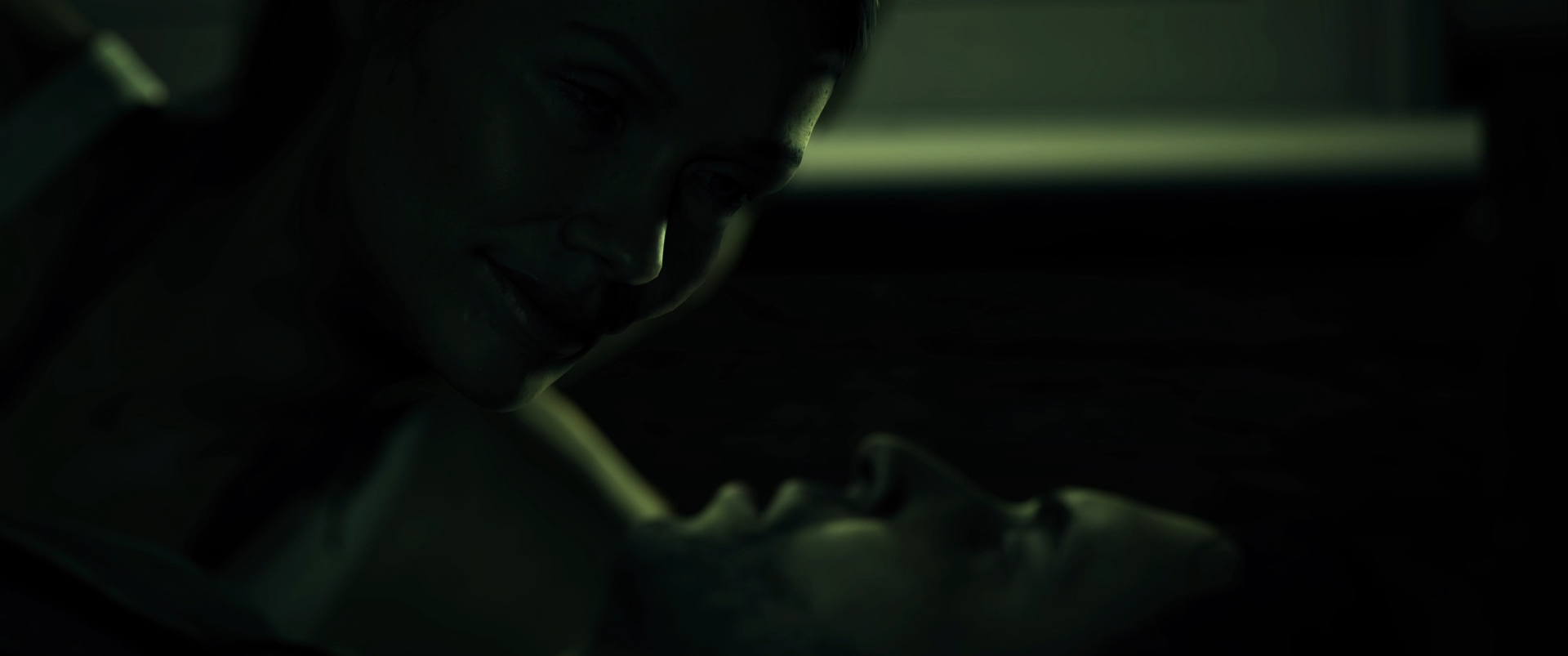One thing I didn’t come around to discussing in my earlier review of Alan Wake was the game’s obsession with hidden collectibles. Here’s a game that invites the player to locate hidden manuscript pages, hidden weapons caches, hidden beverage can pyramids, hidden readable signs, hidden radio shows, hidden TV shows, and—my personal favorite—hidden coffee thermoses. Finding these items is not a requirement for completing the main game, but as with Limbo it's an activity that can earn achievement points. The player can consult an in-game “statistics” screen to observe their progress toward locating each of these items.
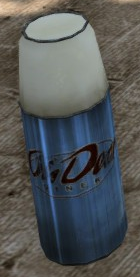
While most of the items end up being pretty easy to spot through the regular course of play, there remain some proverbial needles in the haystack. This game presents a lot of virtual ground to cover.
The TV and radio shows are relatively easy to locate and worthwhile to find because they lend interest and a sense of authenticity to the game world. The manuscript pages basically do the same, adding narrative subtext, although these items are more scattered and much more numerous. The signs offer a little bit of subtext but it seems pointless to make a collectible game out of them.
The inclusion of weapons caches make the most sense from an actual game-playing perspective, as they contain useful items that bolster the player’s inventory and ability to combat enemies. The game also employs a helpful marker system for spotting and guiding the player toward these nearby caches. The player character’s flashlight will reveal painted golden splotches and arrows—previously unseen—leading to treasure. Even better, this aspect of the game is tied fittingly into the overarching storyline of the game (there's a character in the game who the player later discovers has actually gone around and supposedly set up these hidden caches for a reason). I like that. But, again, does the game need to turn these caches into part of a collect-a-thon?
The Alan Wake collectibles that make the least amount of sense would be the can pyramids and coffee thermoses. The can pyramids serve as a kind of quirky Easter egg. Find them and knock them over to unlock the item. Why include it? Well, why not?
The thermoses don’t seem to add anything to the game either. And yet there are 100 of them spread throughout the six episodes. That’s a lot! Their presence is never explained, let alone acknowledged. They serve no mechanical purpose. And while most can be located with minimal exploration, by their very inclusion it creates a situation in which the obsessive player will wander off the beaten trail time and time again simply because there might be a stray thermos just around the corner.
This type of feature throws the entire pacing of Alan Wake completely out of whack. From a narrative role-playing perspective, why would a protagonist who is in complete mortal peril—not to mention a time crunch—go off on a wild goose chase every other minute to look for coffee thermoses? I’m not saying everything in a game has to add up to neat narrative logic (although that wouldn’t be so bad), but it all comes back to the point that looking for a needle in a haystack is, most of the time, decidedly not enjoyable.
Another game that went heavy on the collectibles was 2009's Batman: Arkham Asylum from Rocksteady Studios. Similar to Limbo, one could reasonably argue the existence of multiple play-through modes in Arkham Asylum. There’s the main storyline with its clear chain of events, objectives, boss fights and other combat encounters leading to eventual narrative conclusion. There’s also a wealth of hidden collectibles associated with various Riddler challenges, and finding these can be a mode of game playing seemingly all its own.

On the one hand, there was some satisfaction to be had in seeking out these sundry secrets. Here's another game that employed a clever hint system—or in this case, appropriately, a riddle system—that involved thinking and analysis rather than mindless wandering around (although there was plenty of that too). It nevertheless bothered me thinking I could have otherwise charged through the game in a nice, action-packed eight-hour-or-so push.
When I played through the game I found it somewhat annoying how these two basic modes—the so-called “main game” and the Riddler treasure hunt—were operating at odds with one another. The entire course of the game is supposed to occur in one epic night (although there is no actual time limit or consequence for taking too long to complete objectives). Everything in the main storyline of the game communicated urgency. Why then was the game simultaneously encouraging me to spend precious hours retracing my steps and exploring every corner of the island to find statues, tape recordings, hidden painted question marks and more?
The idea of incorporating hidden and/or collectible items within a video game world goes way back. I don't need to bother trying to identify the earliest examples, because the type of game element I'm talking about isn't easily defined. Super Mario Bros. incorporated all manner of hidden coins, power ups and extra lives. What's interesting to me, however, are the types of hidden collectibles that are in place to add another layer of player motivation, secondary to the main objective of simply finishing the game.
It think there was a time—particularly during the transitional years when game worlds became predominantly three-dimensional—when this notion of finding hidden or scattered items really had its heyday. I'm thinking of the Nintendo 64 era and the cutesy platformer games wherein this sort of activity served as a placeholder for keeping players occupied and goal-oriented. Forward progress in Super Mario 64 was tied to finding hidden or sometimes hard-to-reach stars within game levels to unlock new levels. Similar to Limbo, the game gave players helpful hints to finding these stars. This collecting business seemed to do the trick for a number of years until games like Donkey Kong 64 came along and turned us all insane (for brevity's sake, let it simply be said there was too much collecting, and it wasn't fun). And the cutesy-platformer genre went the way of the buffalo.
Nevertheless, the concept of hidden collectibles remained and persists—mostly as an afterthought. It's long seemed to me that scattering hidden items has to do with giving players an excuse to explore and interact with a large game world. In other words, the space is there. The developers went through a lot of trouble making it big and pretty. Incorporating combat only goes so far. Why let all that pretty space go to waste?
My point is there are good methods and bad methods for addressing this problem. If a game developer is going to include an activity into their game, hidden collectibles included, it should be deliberate and with purpose. I'm tired of these pointless hidden items being plopped down or tucked behind random corners with little reason or consideration for the player's sense of logic or intuition. I'm tired of wandering aimlessly without a clue. And I'm tired of doing this for no other reason than to get that 100%-unlocked statistic or achievement point.
If I'm going to be looking for something, I want it to be a game and not a random, time-wasting task. But I also want to play games that maintain their tension-heavy forward progress. Backtracking for the sake of collecting breaks the overall experience.
Does any of this rambling make sense? If anyone has any thoughts on this subject feel free to leave a comment.




